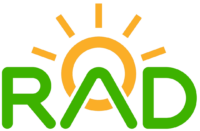When it comes to harnessing solar energy, the choice between microinverters and string inverters is an important decision that could impact the efficiency and performance of your solar power system. Let’s have a look at the main pros and cons of both technologies to empower you with the knowledge needed to make an informed choice for your solar investment. You can also see this brief informative video on solar.com website to get a better idea of how microinverters work as compared to string inverters.
Understanding the Microinverter
Microinverters operate at the individual panel level. These compact devices convert DC electricity produced by a solar panel into AC electricity right on the spot. Picture it like having a personal translator for each solar panel, ensuring optimal performance regardless of shading or panel malfunctions.
The Pros of Microinverters
- Enhanced Panel-Level Performance: Microinverters mitigate the impact of shading or individual panel issues, ensuring that the overall system performance remains robust.
- Monitoring: Enjoy real-time monitoring of each panel’s performance, empowering you with valuable insights to identify and address any potential issues promptly.
- Scalability and Flexibility: Easily expand your solar array by adding more panels with microinverters without worrying about compatibility issues.
The Cons of Microinverters
- Cost Consideration: The individualized nature of microinverters comes at a higher upfront cost compared to string inverters.
- Installation Complexity: While microinverters offer flexibility, the installation process can be more intricate.
String Inverters – The Backbone of Solar Arrays
String inverters, on the other hand, take a centralized approach. They connect multiple solar panels in series, channeling the DC electricity to a single inverter where the conversion to AC occurs.
The Pros of String Inverters
- Cost Efficiency: String inverters are generally more cost-effective than their microinverter counterparts, making them an attractive option for budget-conscious solar enthusiasts.
- Simplified Maintenance: With fewer components, string inverters are simpler to maintain and troubleshoot, reducing long-term maintenance costs.
The Cons of String Inverters
- Shade Challenges: String inverters are susceptible to the ‘weakest link’ phenomenon, where shading or issues with one panel can impact the entire string’s performance.
- Monitoring Limitations: Monitoring is done at the string level, making it challenging to pinpoint issues at the individual panel level.
Making the Choice – What Fits Your Solar Installation?
The decision between microinverters and string inverters ultimately boils down to your specific needs, budget, and future expansion plans. If individualized performance monitoring and flexibility are priorities, microinverters might be the ideal choice. On the other hand, if cost efficiency and simplicity are key, string inverters could be your go-to option.
Get a free quote for your solar installation and help with choosing the right inverter by clicking here or give us a call: +34-621 391 417




